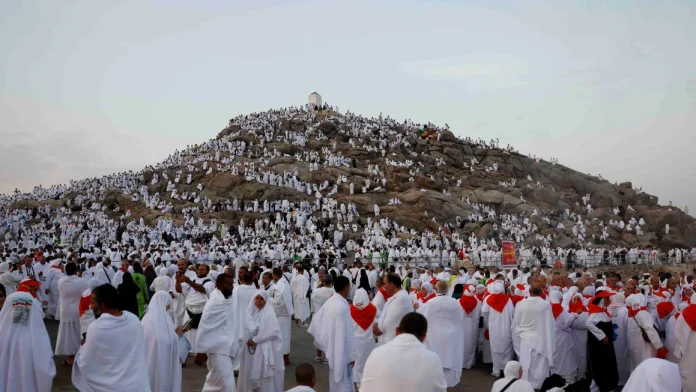At least six Jordanian pilgrims have died of heat stroke during the Hajj pilgrimage in Saudi Arabia, The Washington Post reports.
Temperatures in Mecca, home to Islam’s holiest site, reached 120 degrees Fahrenheit (49 degrees Celsius) on Sunday, according to the National Centre for Meteorology. Jordan’s foreign ministry later revised the death toll to 14, although it was not immediately clear whether the additional deaths were heat-related.
According to the Saudi Press Agency, more than 2,700 cases of heat stress and sunstroke were reported among pilgrims on Monday, said Mohammed Al-Abdulaali, a spokesman for the Saudi health ministry.
Hajj is one of the five pillars of Islam and at least one pilgrimage during a lifetime is considered mandatory for all able-bodied and financially able Muslims. Most rituals take place in the open air, including walking in circles around the Kaaba, Islam’s holiest site, saying prayers in front of it and walking in the footsteps of the Prophet Muhammad on the Mount of Mercy.
This year, 1.8 million people from around the world are taking part in the Hajj, local authorities said. The pilgrimage began on Friday and will end on Wednesday. Islam follows the lunar calendar, which has 354 days, so the Hajj shifts by 10 or 11 days each year on the Gregorian calendar.
Increased heat and humidity due to climate change in parts of Saudi Arabia where the Hajj is performed could make the pilgrimage dangerous for some people, according to a study published in 2019. Researchers from the Massachusetts Institute of Technology and Loyola Marymount University in Los Angeles said the risks could be serious if the Hajj takes place during the hottest summer months – from 2047 to 2052 and from 2079 to 2086.
Dangerous heat wave is progressing
Thousands of cases of heat stress were reported during last year’s Hajj, which took place in late June.
In addition to protective measures, the researchers recommend limiting the number of pilgrims and favouring those in good health during high-risk years. (During the 2021 coronavirus pandemic, Saudi Arabia limited participation in the pilgrimage to pilgrims younger than 65 and drew no more than 60,000 people.)
In 2050, Mecca will have 182 days with very dangerous heat above 89.6 degrees in the sun and 54 days with such heat in the shade, according to a global analysis by The Washington Post.
Saudi Arabia is trying to adapt to the rapidly changing situation. Pilgrims are being given cold water, set up large umbrellas with fans, and special hospitals to treat heat-related illnesses.
The country’s Ministry of Hajj and Umrah has also advised pilgrims to take measures to avoid heat stroke, including minimising sun exposure and drinking fluids.
The problem of soaring temperatures is global. Dozens of heat-related deaths have been reported this summer in India, where temperatures have soared to 120 degrees centigrade and remained above 90 at night in some parts of the country. In Greece, authorities are concerned about tourists going missing amid the high temperatures sweeping the country. And on Sunday, the National Weather Service declared a heat watch for parts of the US, predicting “an extended period of dangerously hot conditions” with “intense heat and high humidity”.
